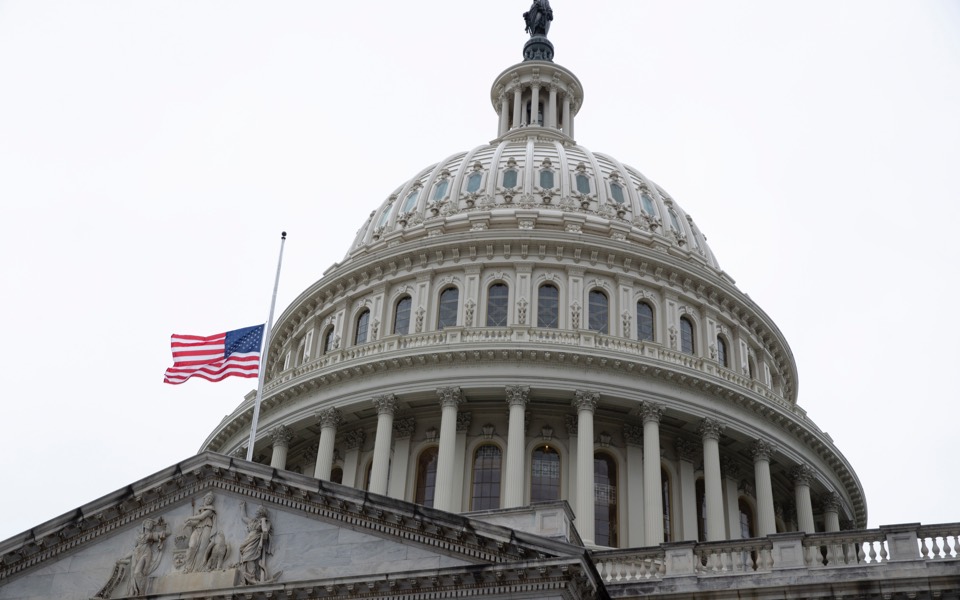Mob, riot, desecration

On 9/11 I traveled by train from Bulgaria to Greece, and then drove to Halkidiki. I had next to no idea that al Qaeda terrorists had hijacked jumbo jets full of passengers and flown into the twin towers in New York City and into the Pentagon, and were foiled by brave passengers from doing the same to the White House.
It was not until the following morning that I saw the news reports on television, replete with imagery of the moments of impact, replayed, sickeningly, ad infinitum. Unlike most of my acquaintances, who witnessed the second plane crash into the second tower as it happened, I have but a secondhand reminiscence of the event.
By the same token, I was unaware of the initial episodes on January 6 at the Capitol building in Washington, DC. I had listened for a few brief moments to President Donald Trump’s speech near the White House, and then a little longer to the electoral vote debate in the Senate, before moving on to other things.
Only somewhat later, after I had received a few text messages and a request from a local radio journalist to provide some expert commentary, did I begin to examine more attentively what had been taking place. (I subsequently spent the evening watching the news on Greek television.)
Here, again, my experience of these events was largely mediated, so to speak, by journalists, who were reporting that a “mob” of Trump supporters were “rioting” at the Capitol.
I recoiled at the thought and wondered, almost despite myself, whether this might be a case of what the conservative pundit Hugh Hewitt likes to call confirmation bias. You see, as I sought that night to find the right words with which to express my own sentiments about the events of 1/6, I worried about how quickly the narrative of a seditious horde invading the Capitol had taken hold in the mainstream media.
Had they not exaggerated the magnitude of the story too easily? Was it a mob? Was there a riot, not to say an insurrection? How did I feel, moreover – was I shocked, as were, ostensibly, the local journalists with whom I spoke? The only word I could muster within 24 hours was sadness – “thlipsi” in Greek. But was this really what I felt, what I thought?
Investigative journalism has since shed light on the nature of the disturbance at the Capitol and rendered plausible the interpretation that there was culpable intent and complicity among those involved, including, conceivably, the president and his closest allies. My own sources explained to me that while some tens of thousands of largely peaceful demonstrators attended the president’s speech, maybe only 300 or 400 of them actually broke into the Capitol building. While they were violent and criminal, this was no revolution, contrary to the claims of one young rally-goer from Tennessee. A failed putsch, maybe.
So I still needed to define for myself what had actually happened. It was New York Times columnist David Brooks who put it best: It was desecration.
Imagine Ottoman Turks breaking into the churches at Mystras and defacing the icons and destroying other sacred artifacts, and then converting that holy space into a mosque. This sort of desecration was both the aim and the attainment of the vandals who smashed their way into the Capitol on January 6. They may re-emerge in the coming days, if not in Washington, then in state capitals around the country.
Understand clearly that we need now to identify remedies to the behavior of the smashers, those for whom Donald Trump’s nihilism has become a call to a perverse sort of public service.
To begin with, there is clearly a lapse in political knowledge in the United States – from the president himself down to his youthful minions.
What American politician,” Kenneth Minogue writes, “could move a step without a close knowledge of the Constitution, the Bill of Rights, and many of the decisions of the Supreme Court?… He must know how the Senate and Congress work in detail, not to mention the way in which the states relate to them… Much of this is low-level, slightly tedious, descriptive material, but without it the politician’s understanding hardly rises above gossip.”
Sadly, as Rex Tillerson has just recently revealed, Donald Trump’s “understanding of global events, his understanding of global history, his understanding of US history was really limited.” Apparently, so is that of his most ardent followers, who otherwise call themselves patriots.
Just as concerning is a trend among younger Americans to denigrate and ignore the workings of those institutions which have long been the pride of our democracy. More important still is what civic education activists call political dispositions. Montesquieu might have called it the spirit of democracy.
How we overcome these lapses, which exist in many liberal democracies today, is above all a matter of political and civic education, which Larry Diamond has now argued amounts to one of our greatest challenges. “In the wake of this calamity, American political and civic leaders now face an urgent imperative to repair the fabric of US democracy.”
The collegiate center I direct in Thessaloniki has long been dedicated to this task. There is much to be done, but tools and methods do exist to help young people cultivate civic dispositions and political knowledge for themselves in a manner which will help invigorate our democratic culture.
David Wisner, PhD, is executive director of the Michael and Kitty Dukakis Center for Public and Humanitarian Service and professor of international relations at the American College of Thessaloniki.





